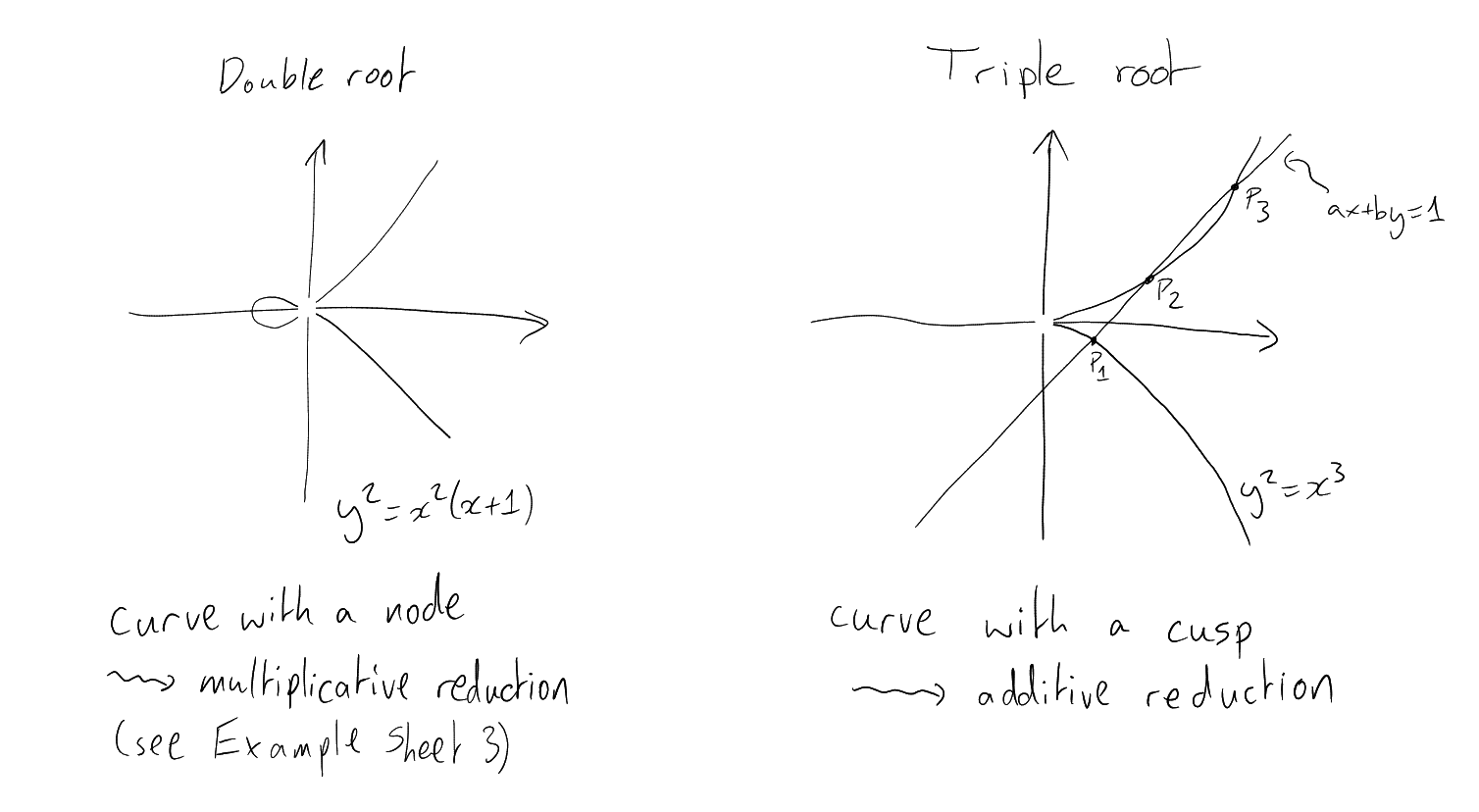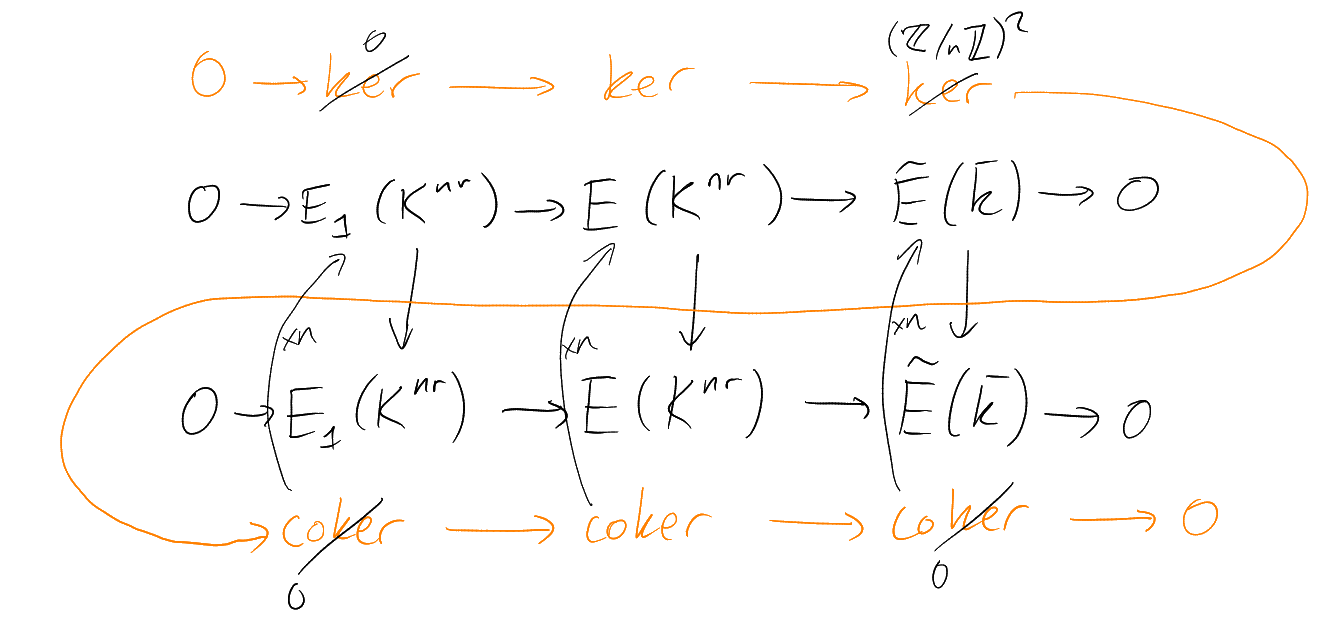
Let
Notation. Valuation ring (= ring of integers) will be denoted by
|
|
Unit group will be denoted by
|
|
The maximal ideal will be denoted by
The residue field will be denoted by
We assume
Let
Definition (Integral / minimal Weierstrass equation).
A Weierstrass equation for
Remark.
(Compare with Q5 from Example Sheet 1)
Proof. Throughout this proof, LHS and RHS refer to the Weierstrass equation of the curve.
Case
Case
Now
so
|
|
for some
If
We fix a minimal Weierstrass equation for
Taking
By Lemma 8.2 this is a subgroup of
|
|
More generally, for
|
|
We claim that
Reminder:
|
|
is an isomorphism of groups with inverse
|
|
Remark.
Proof.
For
Recall
|
|
for some
Claim:
Proof of claim:
|
|
Therefore
(we go from
This proves the claim.
Now
This is always
Same method works for
Proof. Definition of formal group gives
|
|
So if
|
|
Therefore
is a surjective group homomorphism with kernel
Corollary. Assuming that:
Notation.
Reduction modulo
Proposition 9.4. Assuming that:
Proof.
Say Weierstrass equations are related by
Transformation formula for the
The Weierstrass equations obtained by reducing mod
Definition.
The reduction
For an integral Weierstrass equation,
If
If
If
There is a well-defined map
(choose a representative with
We restrict to give
If
or
Therefore
|
|
“kernel of reduction”.
The chord and tangent process still defines a group law on
In cases of bad reduction,
For simplicity we suppose
Then

Looking at coefficient of
Definition (
Note.
If
Proof.
Group homomorphism: A line
|
|
We may assume
|
|
If
So if
[Exercise: check this still works if
Surjective: Let
Since
If (i) then put
|
|
Hensel’s lemma gives us that there exists
|
|
Then
Recall that for
|
|
If
|
|
where for
We have
What about
Proof.
Hence
|
|
is a profinite group, hence compact.
Then
|
|
and hence compact (for the
Now note
So
If
|
|
is a closed subset of
The cosets of
Remark.
either
or
for the above statements: it is essential that we work with minimal Weierstrass equations.
We deduce:
Let
Facts:
Fact: For each
These extensions are Galois, with cyclic Galois groups.
Notation.
|
|
|
|
where
Proof.
For each
|
|
Taking

An isomorphism by Corollary 8.5 applied over each
Snake lemma gives
|
|
So if
|
|
Hence